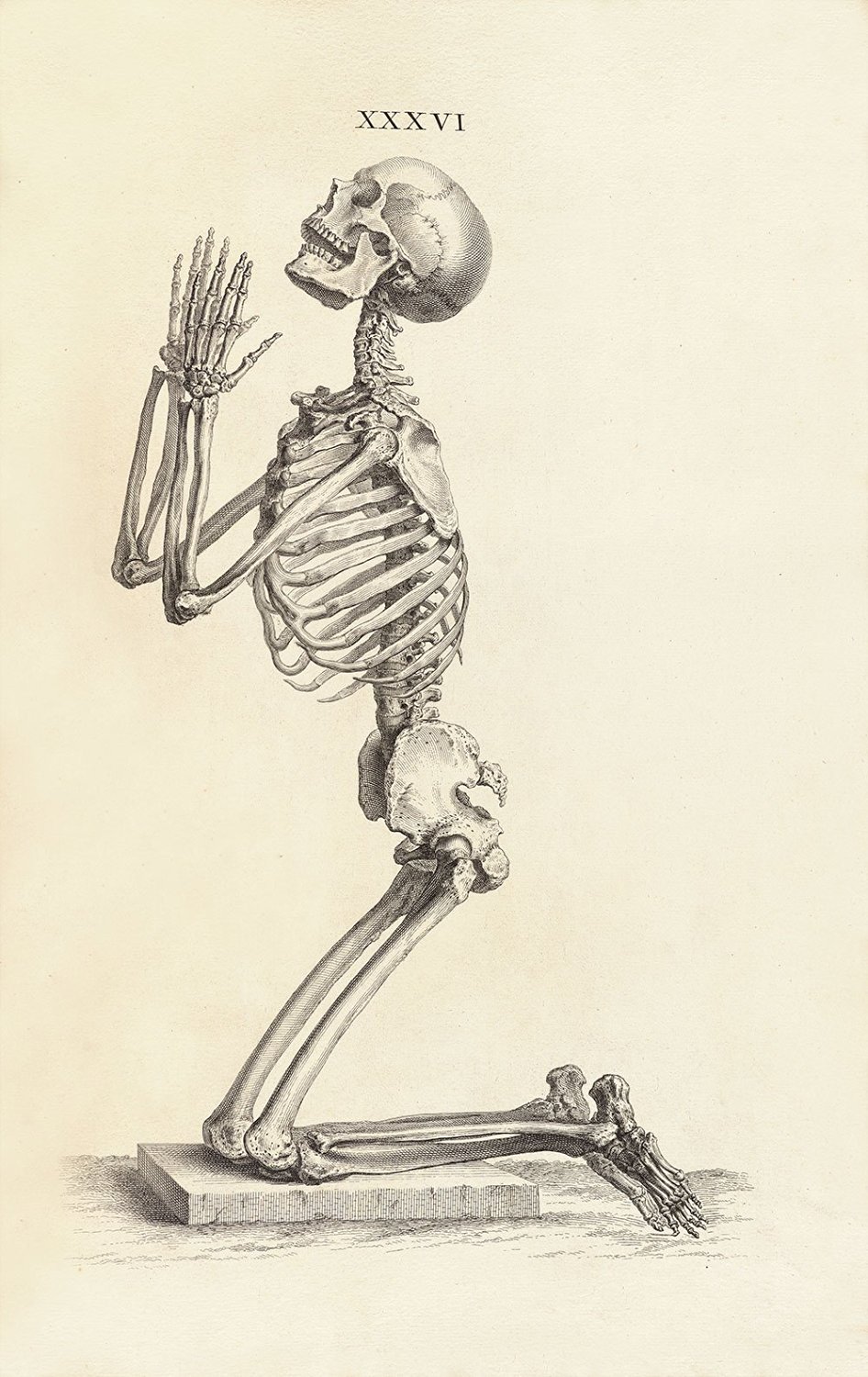Andreas Vesalius died on 2 October 1564 at age 49. Born in Brussels as Andries van Wesel into a family of physicians and pharmacists, Vesalius received his own medical degree from the University of Padua in 1537.
He became explicator chirurgiae responsible for the lectures on anatomy and surgery upon his graduation, and also lectured around Italy in Bologna and Rome. While at Padua, Vesalius developed various tactics for getting around laws forbidding dissection of human cadavers – including simply breaking the laws – and began working with Jan Stephan van Calcar, an apprentice in Titian’s studio. Together Vesalius and van Calcar produced naturalistic anatomical charts of the skeletal, muscular, arterial. and nervous systems as visual aids for students – radical departures from traditional teaching methods in place since the time of Galen.
The textual version of his new approach appeared as De Humani Corporis Fabrica in 1543. Published in seven books, it was illustrated with extremely high-quality woodcuts and the anatomical figures, including the well-known skeletons and “muscle men,” were posed in classical settings in a naturalistic style.
Vesalius traveled to Jerusalem in 1564, dying on the island of Zákinthos on the return journey.
Reference: R. Allen Shotwell. “Animals, Pictures, and Skeletons: Andreas Vesalius’s Reinvention of the Public Anatomy Lesson,” Journal of the History of Medicine and Allied Sciences, 2016, Vol. 71(1), pp.1-18.
Detail of frontisepiece of Vesalius’s De humani corporis fabrica,1543. Wikimedia Commons.
Ripley Alchemical Roll using illustrations by Vesalius, c. 1580, England. Princeton University Manuscript Collection.
“Muscle Man” from Vesalius’ De humani corporis fabrica libri septem, 1543. Staatliche Museen zu Berlin, Kupferstichkabinett, 1397 S.210 / 84.835.
Jan Stephan van Calcar, Portait of Vesalius from De humani corporis fabrica libri septem, 1543. University of California, San Diego.
Animated skeletons from De humani corporis fabrica libri septem, 1543. University of Michigan.
Further Reading:
J.B. deC. M. Saunders and Charles D. O’Malley. The Illustrations from the Works of Andreas Vesalius of Brussels. Dover: Dover Fine art, 1973.
Andreas Vesalius. De humani corporis fabrica – A Facsimile of the revised version of 1555: (On the Fabric of the Human Body). Charleston, S.C.: CreateSpace, 2014.






